
Cathedral Square is the main square of the Peter and Paul Fortress (Hare Island) in St. Petersburg.
Cathedral Square is the heart of the Peter and Paul Fortress.
Cathedral Square has the shape of an irregular trapezoid. In the widest part, the length of the square is about 128 meters, and in the narrowest - 107 meters; the width of the square is 67 meters.
"Cathedral" square is called because it is located on the Peter and Paul Cathedral with the Grand Ducal tomb, representing a single ideological and compositional core of the ensemble of the Peter and Paul Fortress.
The architectural dominants of the Cathedral Square are: the Peter and Paul Cathedral with the Grand Ducal Tomb, the Mint, the Botny and the Commandant's Houses.
The square is pedestrian-only.
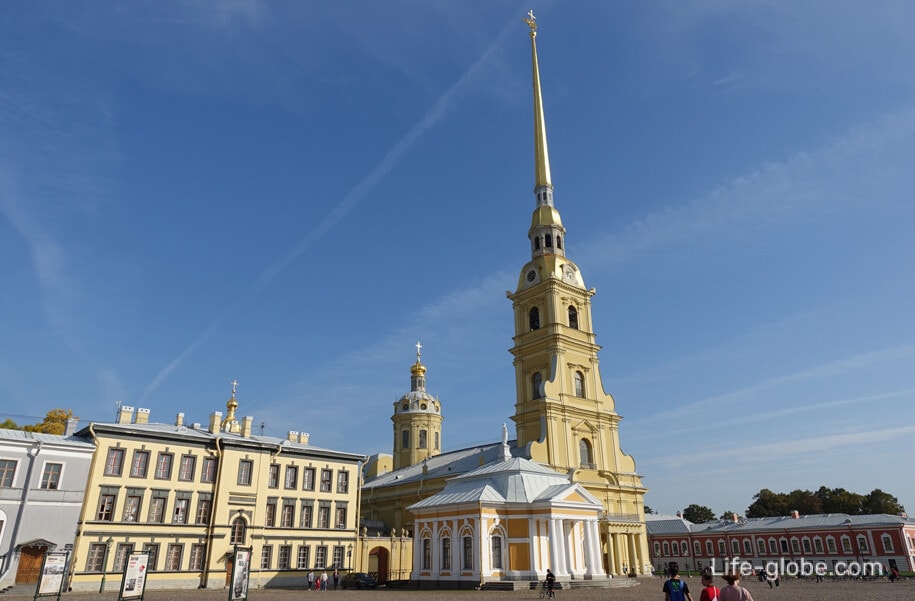

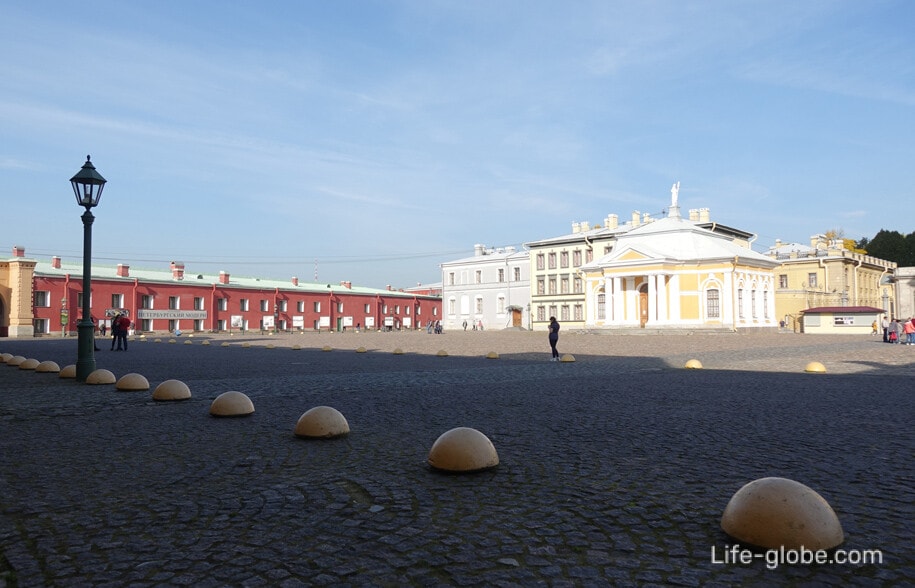
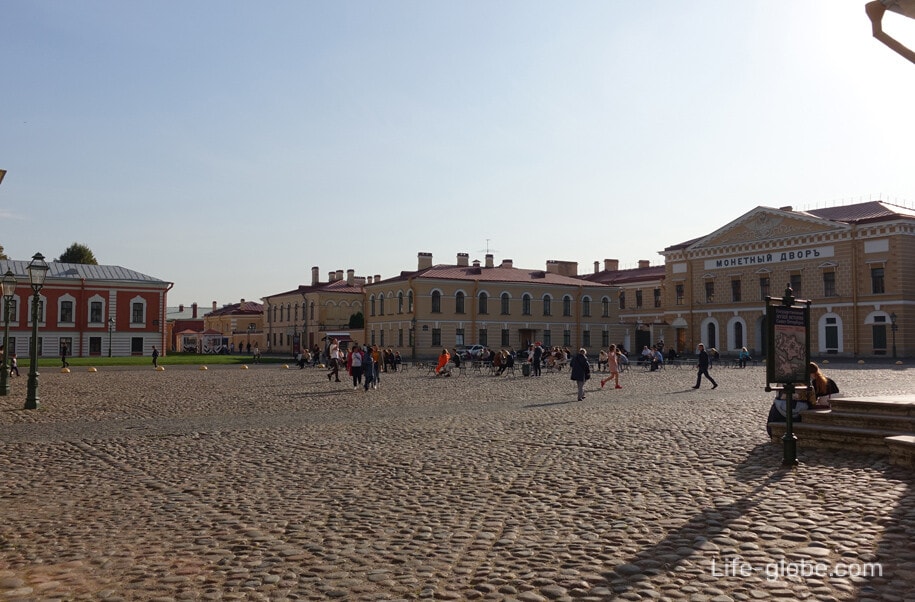
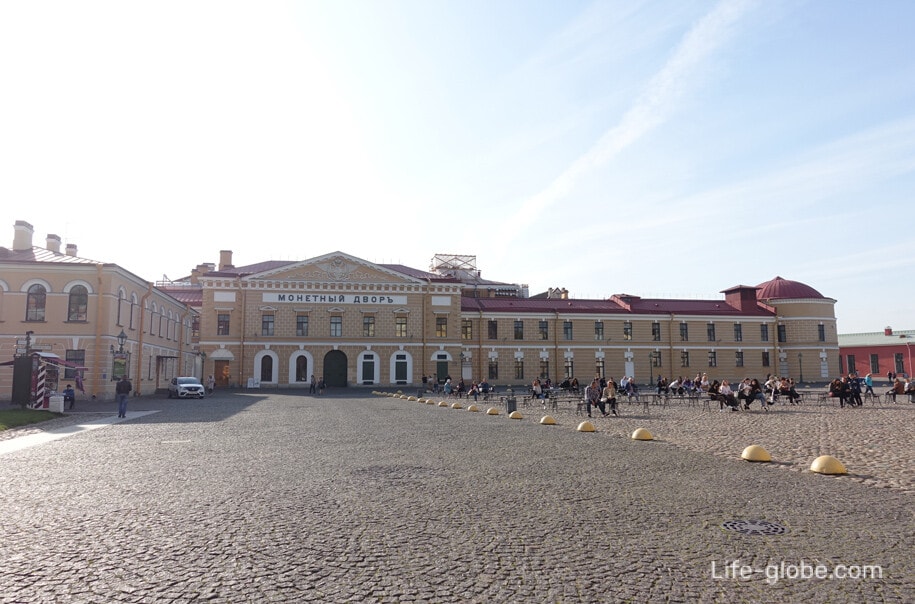
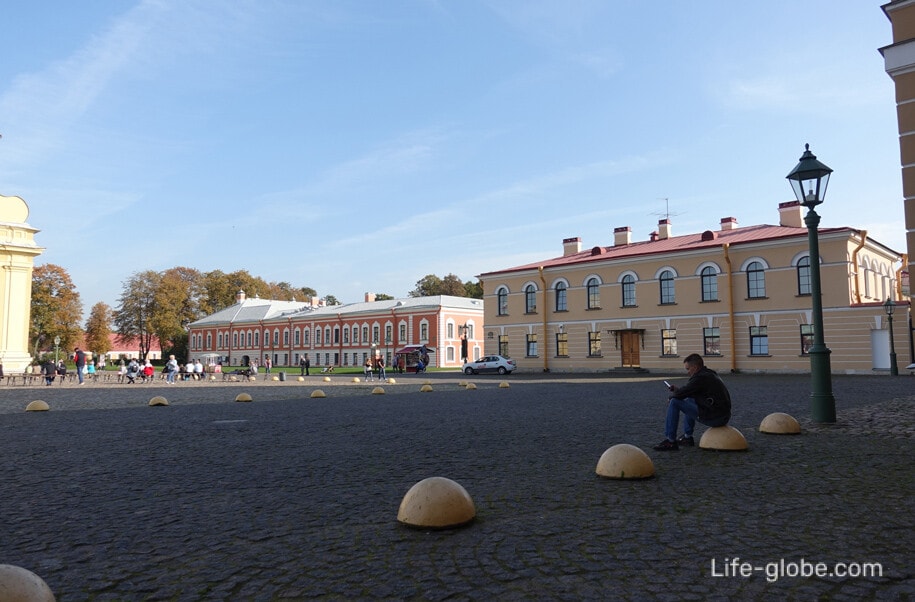

The stone Peter and Paul Cathedral was built from 1712 to 1733 on the site of a wooden church designed and supervised by the Swiss architect DomenicoTresini.
Today, the Peter and Paul Cathedral is a monument of architecture of the early Russian (or so-called Petrovsky) Baroque style.
The main decoration of the cathedral is its multi-tiered high tower-bell tower, decorated with a long gilded spire, which is crowned by a weather vane-the figure of a guardian angel (archangel).
The cathedral functions as a museum, and it also holds memorial services for Russian emperors, since the cathedral was also the tomb of crowned heads (Russian emperors).
In the bell tower of the cathedral there is an observation deck, which can be visited for a fee.
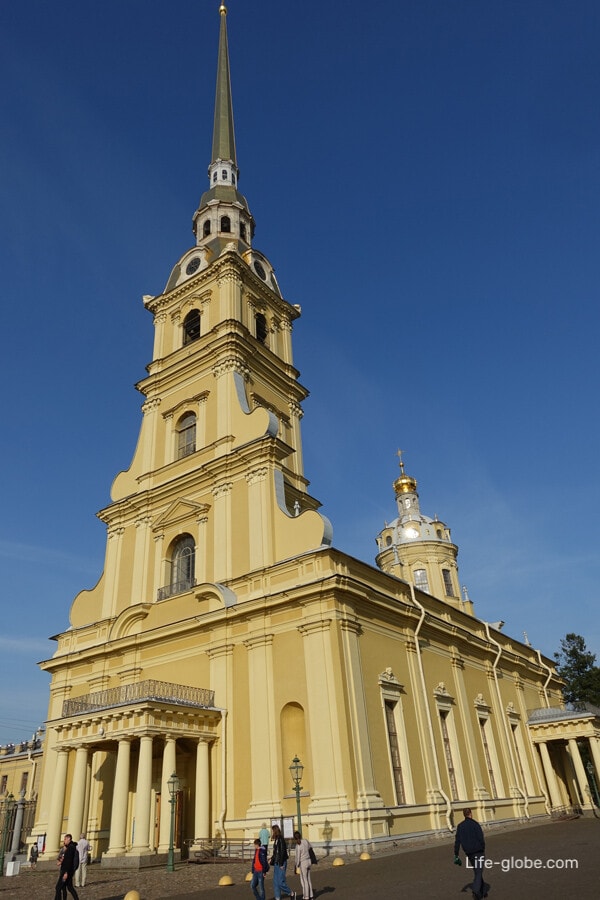

The cathedral is connected by a covered gallery with the Grand Ducal Tomb, built at the cathedral for the burial of the grand dukes.
If the crowned representatives of the Russian Imperial House are buried in the cathedral itself, then in the Grand Ducal tomb - persons who had the title of grand dukes and princesses, as well as princes of the imperial blood and members of the Beauharnais family related to the Romanovs, who had the title of Dukes of Leuchtenberg and serene Princes of Romanov.
The Grand Ducal tomb was built in 1896-1906 by architects D.I. Grimm, A.O. Tomishko and L.N. Benau. It is consecrated as the border of the holy noble Grand Duke Alexander Nevsky. Learn more about the Peter and Paul Cathedral and the Grand Ducal Tomb…
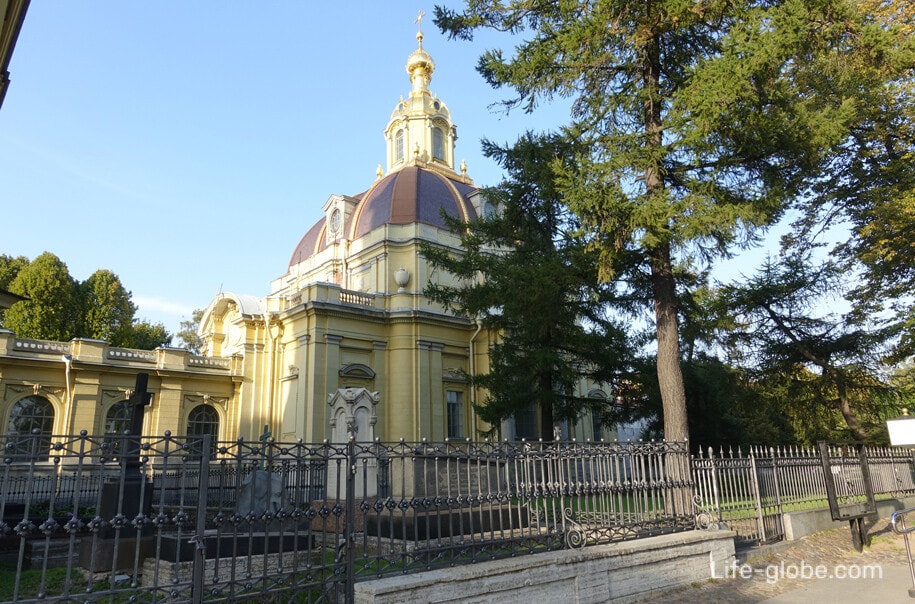
On the north side of the cathedral are two buildings.
The building of the Officers' Assembly with facades in the classicist style for the collection of Russian and foreign standards of weights and measures established by the Mint was built in 1838-1841 by the architect A.M. Kutsi.
In 1879, the repository of standards was moved to a specially built building on Zabalkansky Prospekt, and the premises of the building in the Peter and Paul Fortress under the leadership of military engineer Henrikh Voynitsky were rebuilt for the Officers' Assembly.
In 1897, the military engineer V.F. Asmus built the building on the second floor and used it for residential apartments of the Engineering Department.
In Soviet times, it was a residential building for employees of the Mint.
The building has a late classicist style and is connected to the adjacent building-the Staff Officers' House.
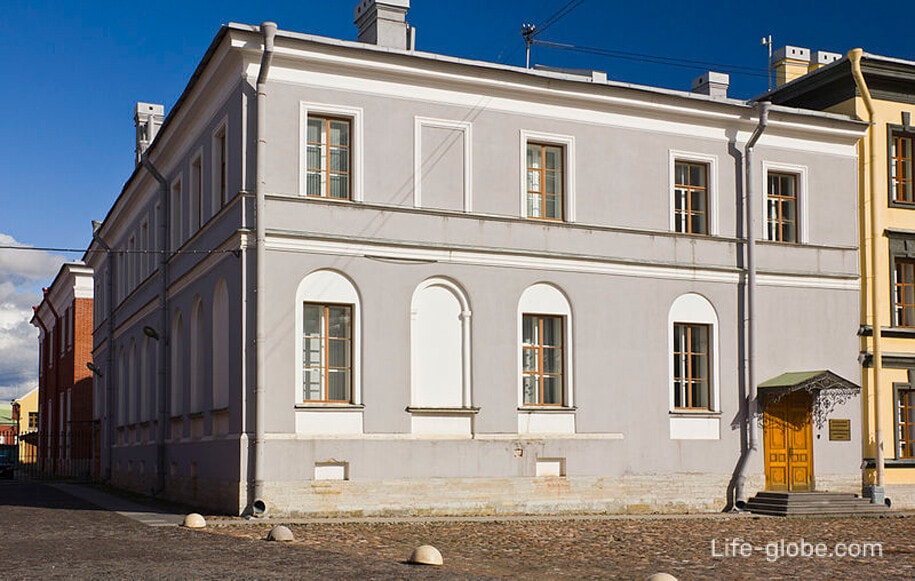

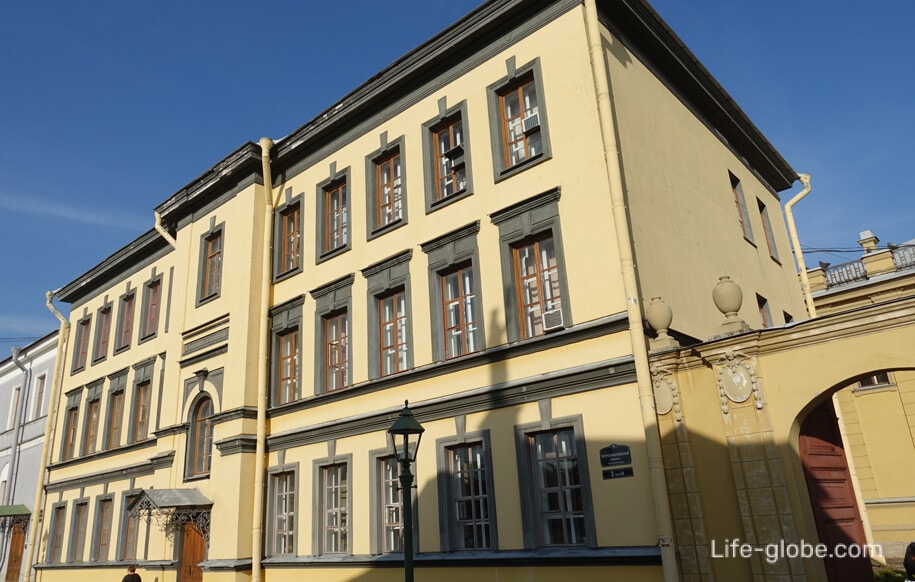
Botny House is a small building (pavilion), erected in 1762-1765 by the architect of German origin Alexander Frantsevich Vista to store a national relic (ship) - the Peter 1 boat, which is known as the "Grandfather of the Russian Fleet".
Today, the place of the "Grandfather of the Russian Fleet" in the Botny House is occupied by its exact copy-a reconstruction model created in 1996-1997 to mark the 300th anniversary of the creation of the Russian Fleet. Learn more about the Bot House and the bot house…
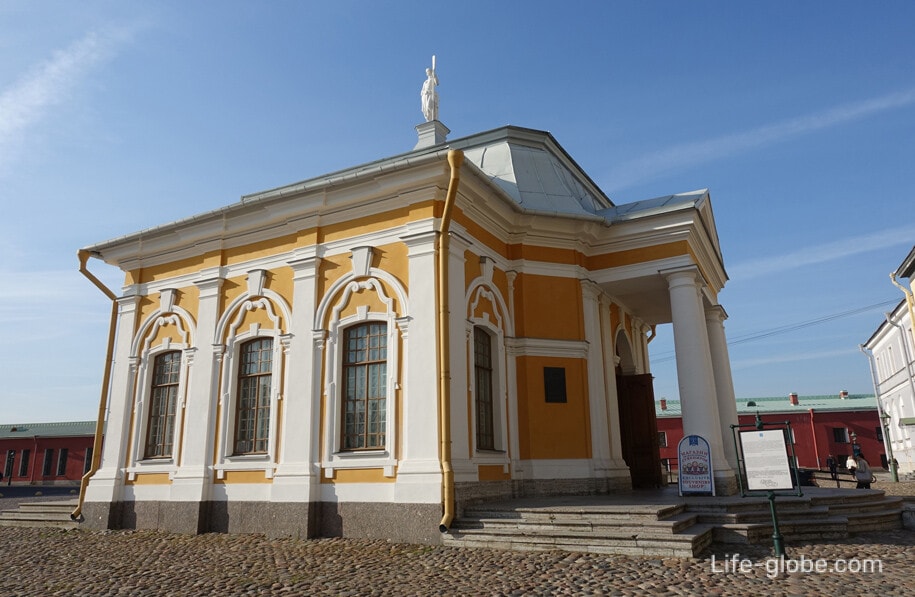
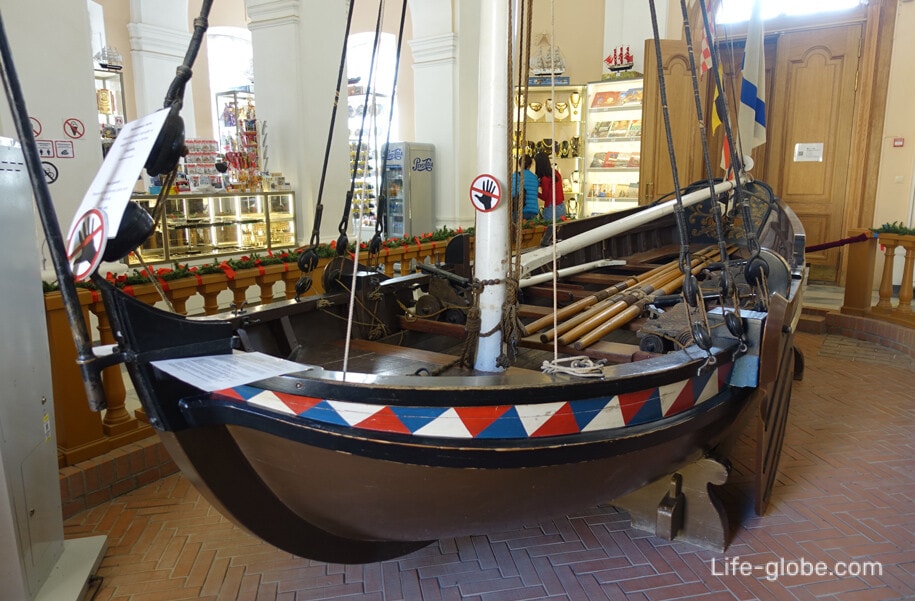
The Mint is one of the oldest industrial enterprises in St. Petersburg, which has been located in the Peter and Paul Fortress since 1724. In the 18th century, the casemates of the Trubetskoy and Naryshkin bastions, the Catherine and Vasilievsky Curtain walls, and specially constructed buildings on the territory of the Peter and Paul Fortress were used for coin production. Since its foundation and until now, the Mint has been the main producer of small change coins, issuing state awards, commemorative medals and badges.
The main building of the Mint was built in 1800-1805 by the architect A. Porto in the style of strict classicism.
Production workshops on the site between Catherine's, Vasilyevskaya and Nikolskaya kurtinami (sections of the fortress walls) were built in 1830-1840 by the architects E.H. Anert and A.M. Kutsi.
They were reconstructed in 1870-1880 by the architect V.E. Stukkei. By the mid-1840s, the territory of the Mint buildings was surrounded by a stone fence.
The two-story structure, with its main facade facing the Cathedral Square of the fortress, with the central part crowned with a triangular pediment and two side wings, is completed by round towers with flat domes.
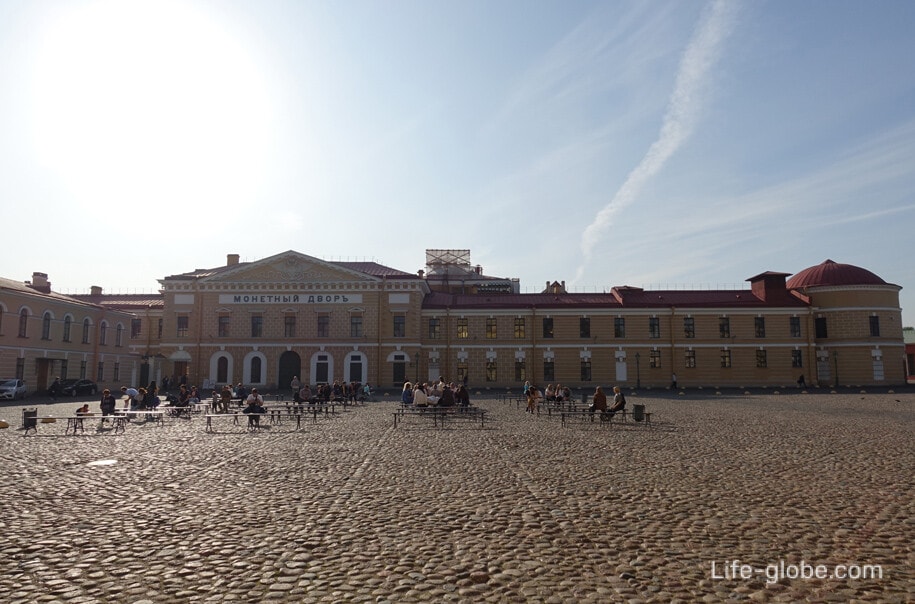
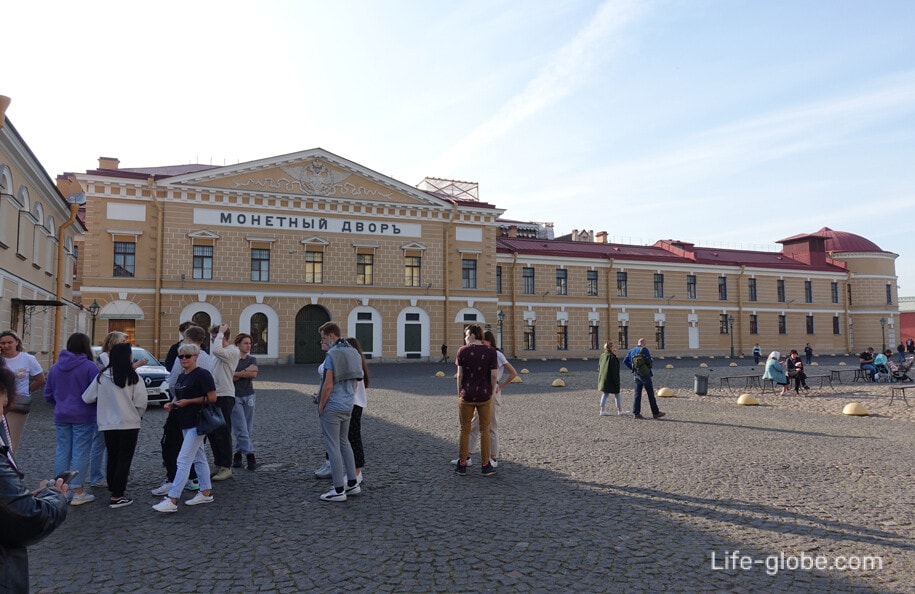

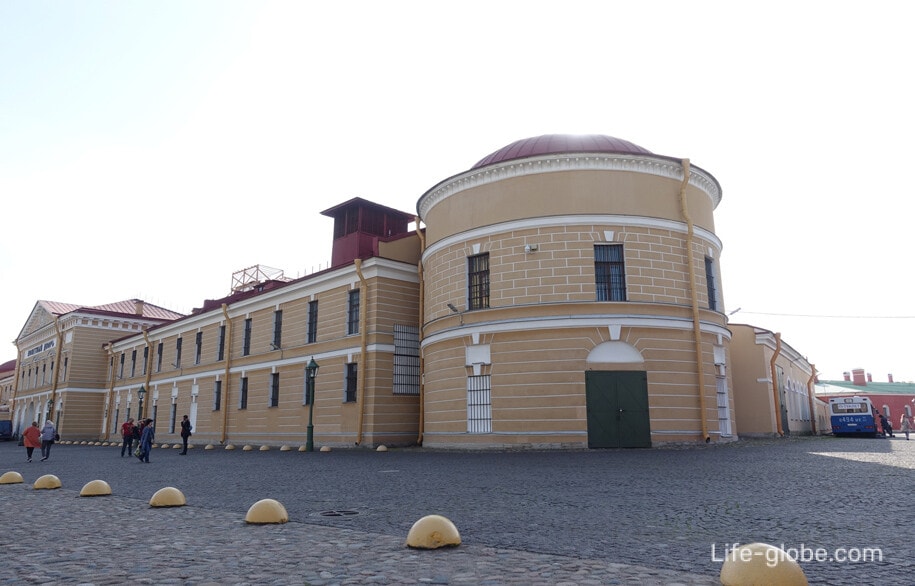
On the territory of the Peter and Paul Fortress, within the walls of the Nikolskaya Curtin, there is a numismatic salon of the Mint, which offers highly artistic products with the trademark of the St. Petersburg Mint of Goznak.
In the building of the Cavalier Anna Ivanovna (Anna of the cavalier), near Golovkin Bastion of the Peter and Paul fortress, hosted the exhibition "History of money", which are presented, including unique coins giants: gold and silver commemorative coins weighing 5 lbs., each of which is very large and heavy commemorative coins ever produced in Russia. The coins were minted at the St. Petersburg Mint, a branch of Goznak JSC.
The Ober-officer and Platz-Major houses are located to the south-east of the main facade of the Mint and are stylistically united in a single architectural ensemble.
The one-story ober-officer's house with a mezzanine was built in 1751. The building housed the office, then the house was transferred for the personal needs of the commandant and the Governor-General. At the beginning of the 19th century, the walls of the building were the apartments of the parade ground adjutants and chief officers, and only two rooms inside the building were left for the commandant's office.
The Platz-Major house was built in 1758 on the site of a cattle yard. The house housed the assistant commandant of the fortress, whose position was officially called "platz-major", the building also housed his working office. After 1844, the second floor of the house was completely occupied by the personal quarters of the commandant's assistant, and on the first floor there was a telegraph station.
In 1843-1844, the ober-officer and platz-major houses were supplemented with the second floors. The new facades of the buildings were designed in the style of late classicism, under the direction of the architect Anton Kutsi. Also, according to the project of Kutsi, the buildings were combined into a single stylistic architectural ensemble.
After 1917, the ensemble of buildings became part of the production complex of the Goznak Mint, which manages both buildings today.

Initially, this place was a wooden house for the commandant of the fortress, built in 1704. The house was then rebuilt.
The full-fledged building was erected in 1743-1746 on the initiative of commandant Stepan Lukich Ignatiev, designed by military engineer Christian de Marin.
In 1747-1748, a detached stone one-story U-shaped service wing was built on the west side of the house. In 1750, the main building was merged with the wing. In 1874 and 1892, the service wings were added to the second floor.
On the second floor of the main building there were the front and living quarters of the commandant of the fortress garrison, the house church in the name of the Introduction to the temple of the Most Holy Theotokos, and on the first floor and in the wing - the office of the Commandant's Office, kitchen, laundry, servants' rooms and stable.
On October 25-26, 1917, the field headquarters of the Petrograd Military Revolutionary Committee operated in the building.
The facade of the main building of the commandant's house is decorated in the Baroque style and mostly retains its original appearance.
Today, the exhibition "The history of St. Petersburg-Petrograd. 1703-1918", which tells the story of St. Petersburg in 1703-1918, as the ceremonial capital of the Russian Empire and the largest industrial metropolis of Russia, through the once daily life of the city. Learn more about the commandant's house and the exhibition…
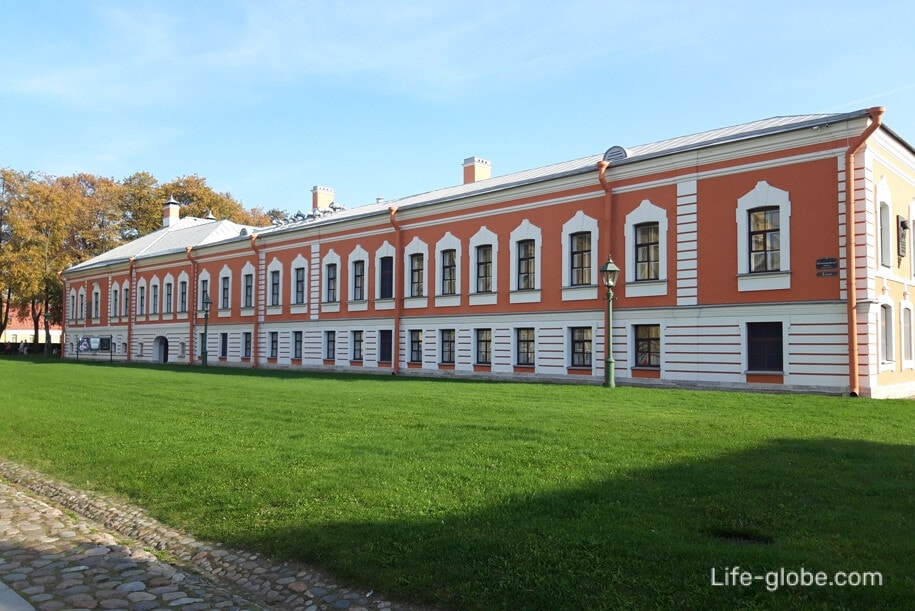
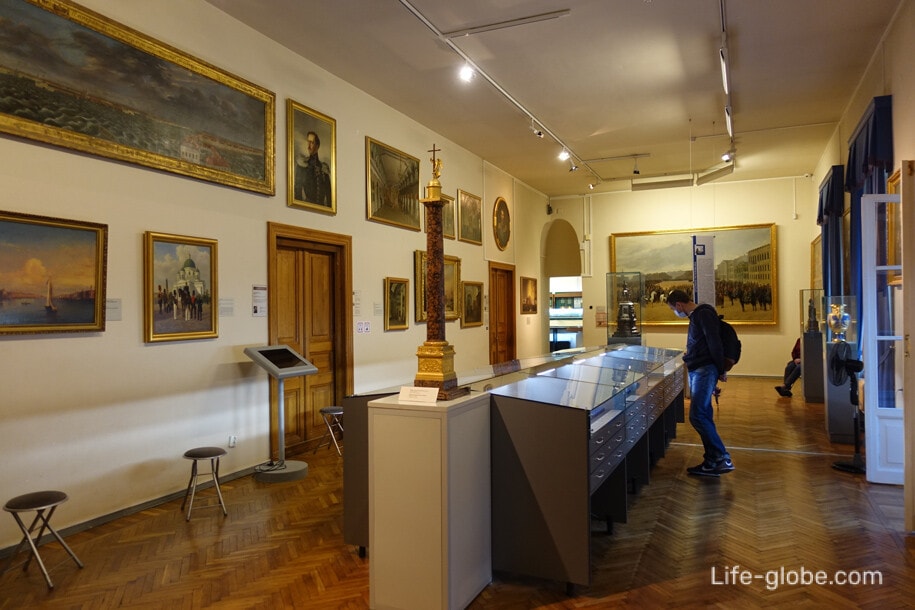
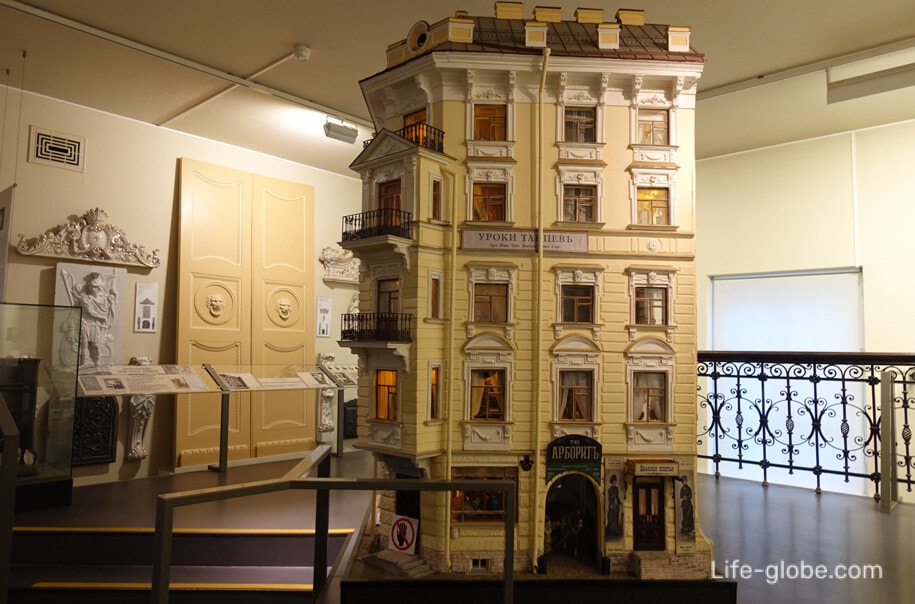
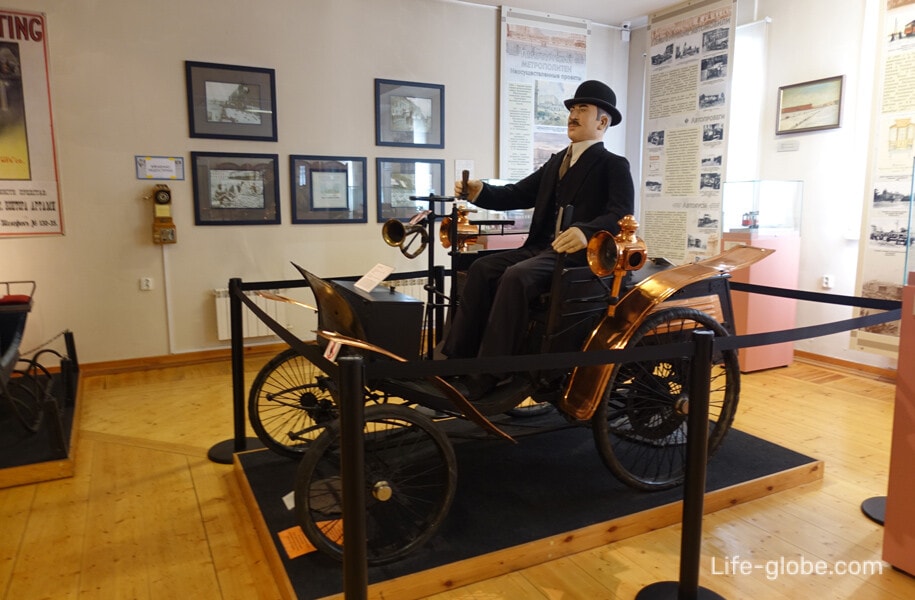
On the north side of the Cathedral Square there is a section of the fortress wall-the Nikolskaya Curtain wall with the Nikolsky Gate.
Initially, the construction of the Nikolskaya Curtain Wall, as well as the entire Peter and Paul Fortress, took place from 1703, and then the structures of the fortress, including to save time, were built of wood and earth (wood-earth fortifications).
The construction of the curtain wall in stone took place in 1729, designed by the architect and engineer-fortifier D. Trezzini and military engineer B.-H. Minich.
In the Nikolskaya Curtin there is the Nikolsky Gate, which was built in 1729 during the reconstruction of the wooden-earth Nikolskaya Curtin into a stone one. Subsequently, the gate was modified and expanded.
On the second floor of the Nikolskaya Curtin there is an exhibition "The Object world of Art Nouveau", which presents collections of decorative and applied art made in the Art Nouveau style: furniture, lighting devices, porcelain and glass products, household items made of metal, stained glass windows.

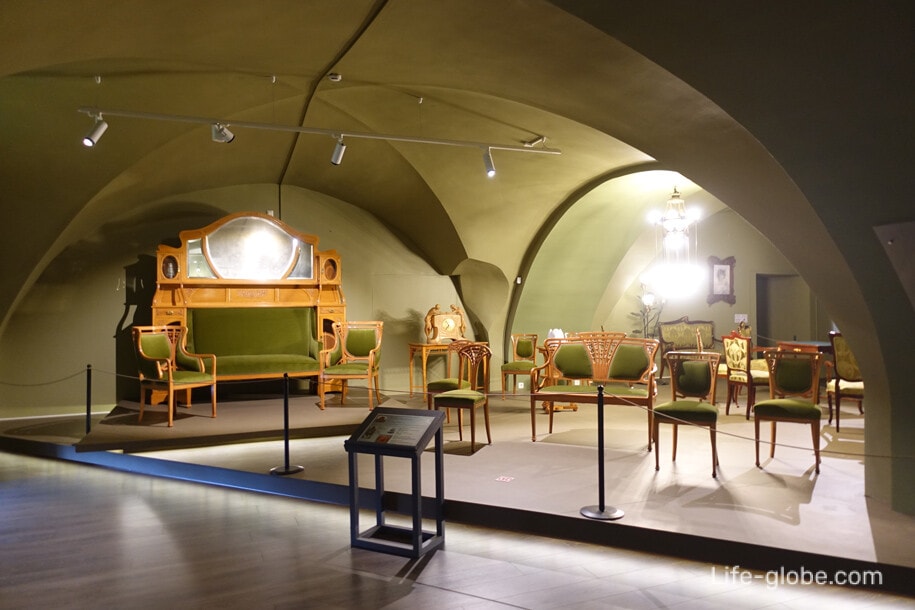
The entrance to the territory of the Peter and Paul Fortress is free (free of charge).
Entrance to museums, exhibitions, the Peter and Paul Cathedral with the tomb and the ascent to the observation deck in the cathedral tower are paid.
All the necessary information, including the opening hours of the fortress and museums, ticket prices, the location of ticket offices and the conditions for visiting objects on the territory of the fortress, we recommend that you check on the official website of the State Museum of the History of St. Petersburg.
Website of the Museum of the History of St. Petersburg: spbmuseum.
You can also visit the Peter and Paul Fortress with one of the excursions
Nearest metro stations: "Gorkovskaya" and "Sportivnaya".
All accommodation facilities in Saint Petersburg, including in the city center and near the Peter and Paul Fortress, can be viewed and booked here